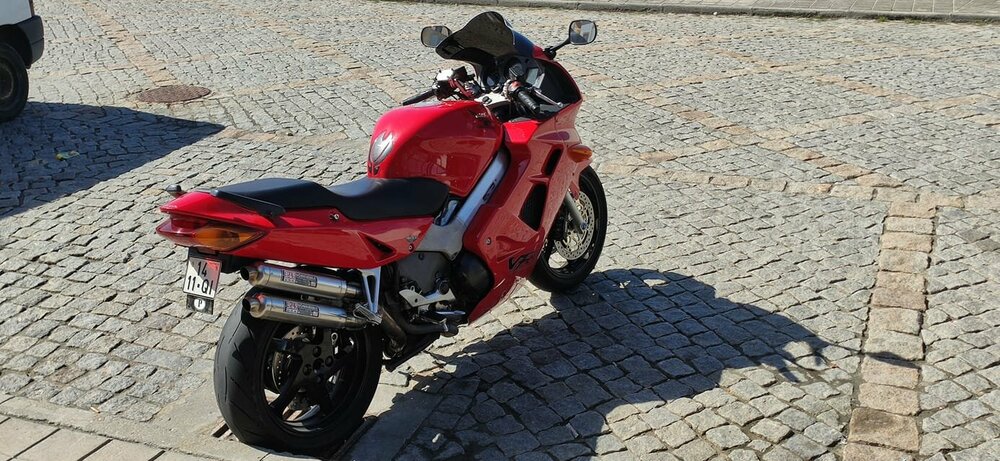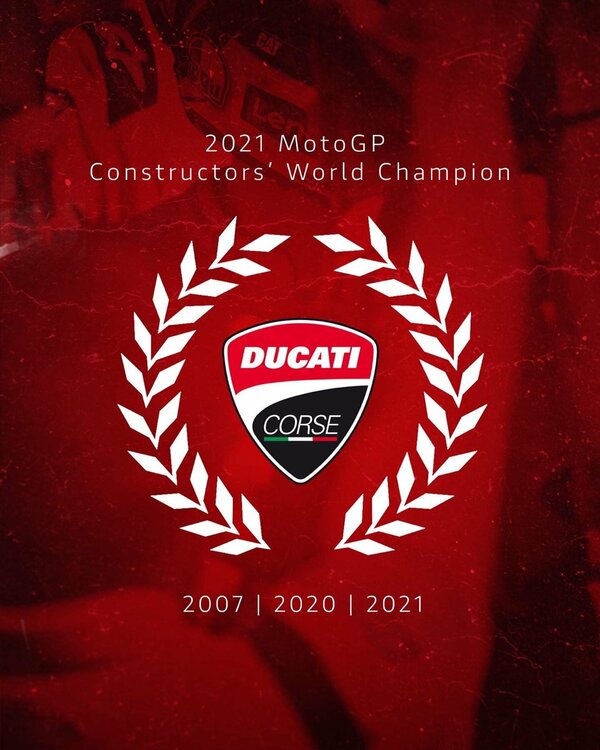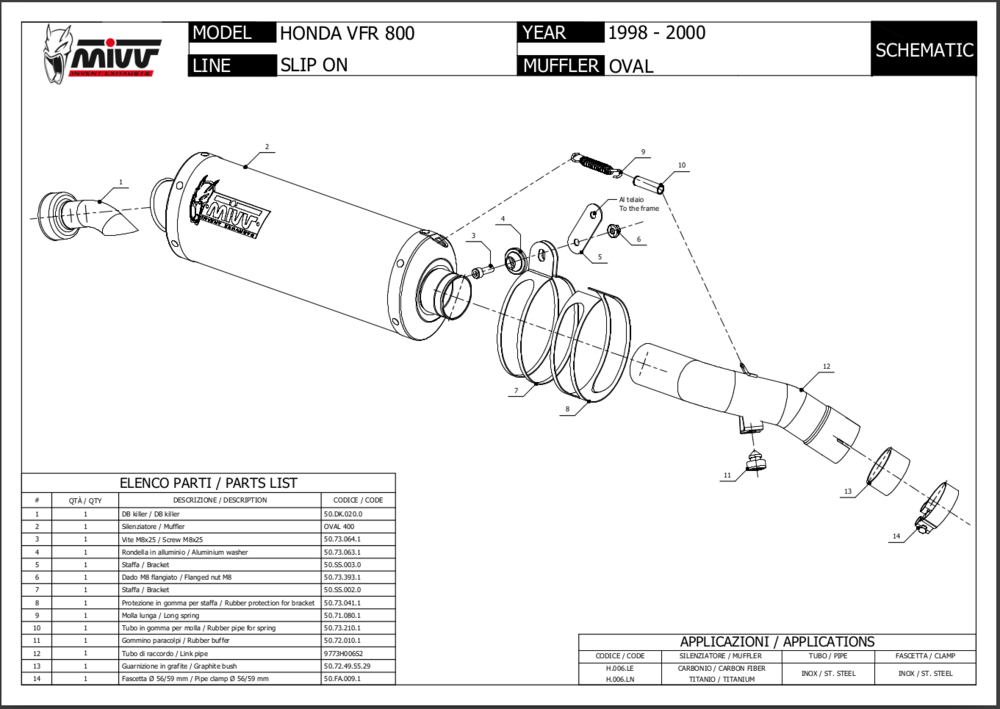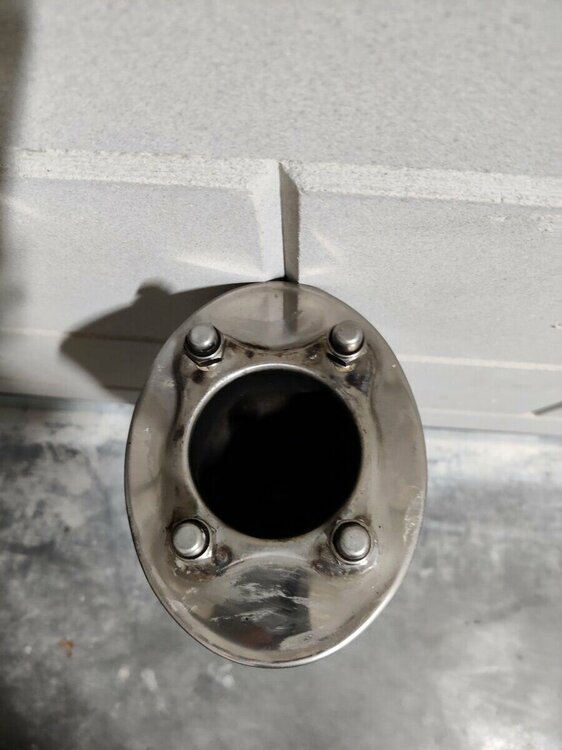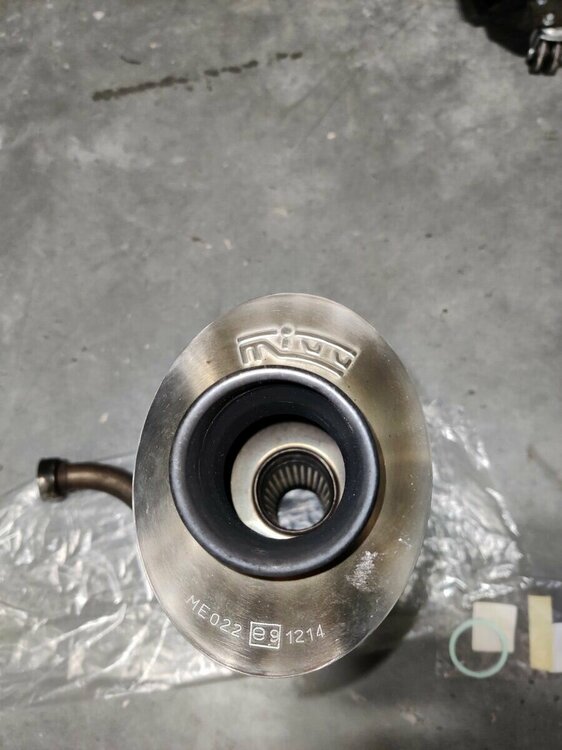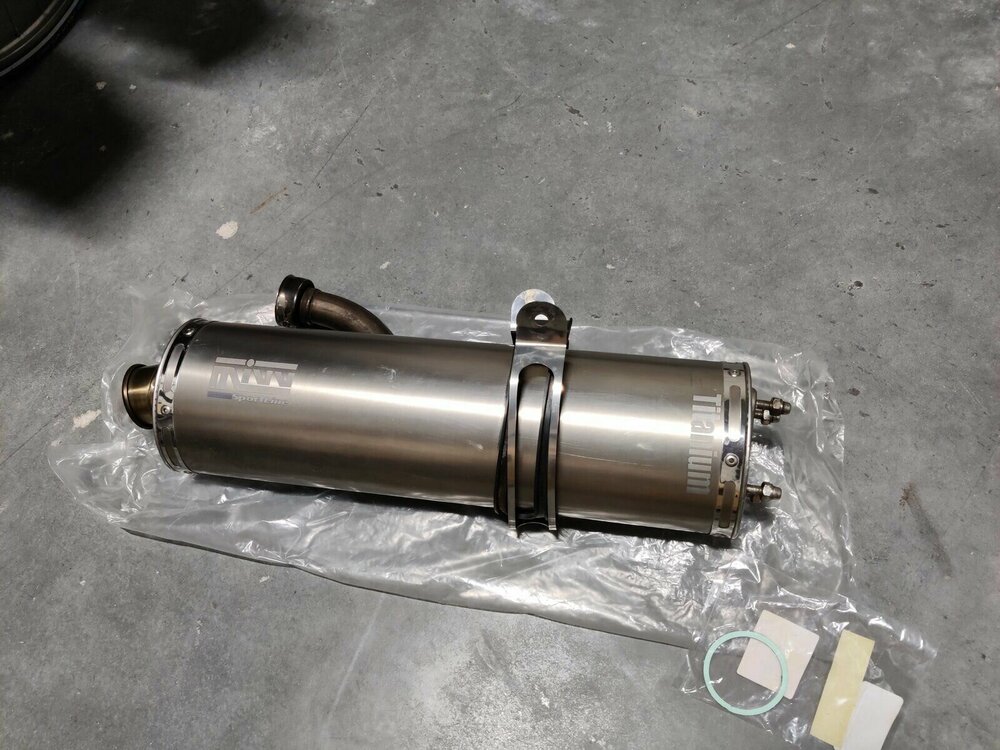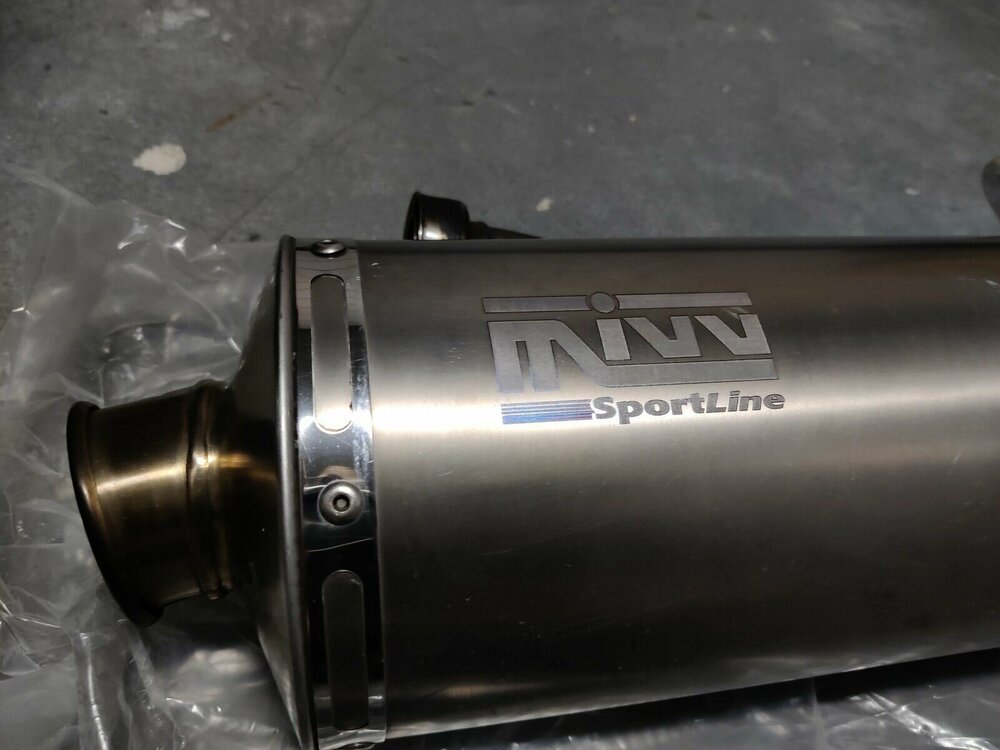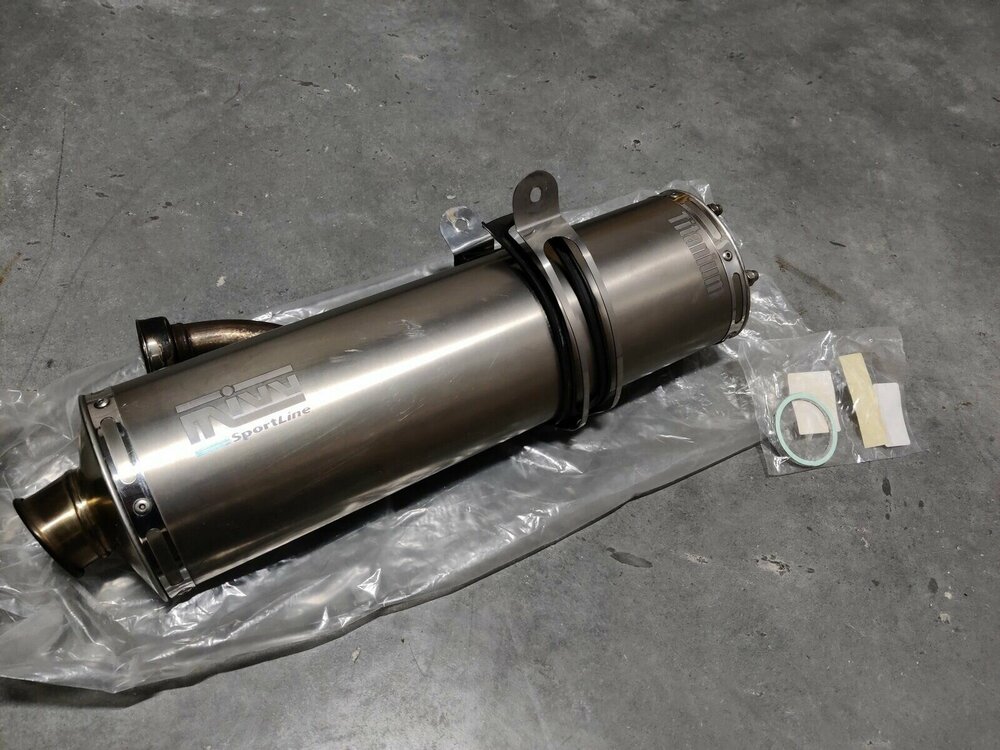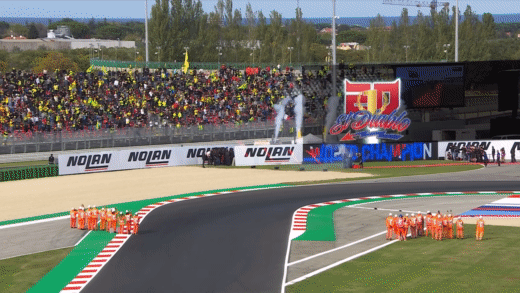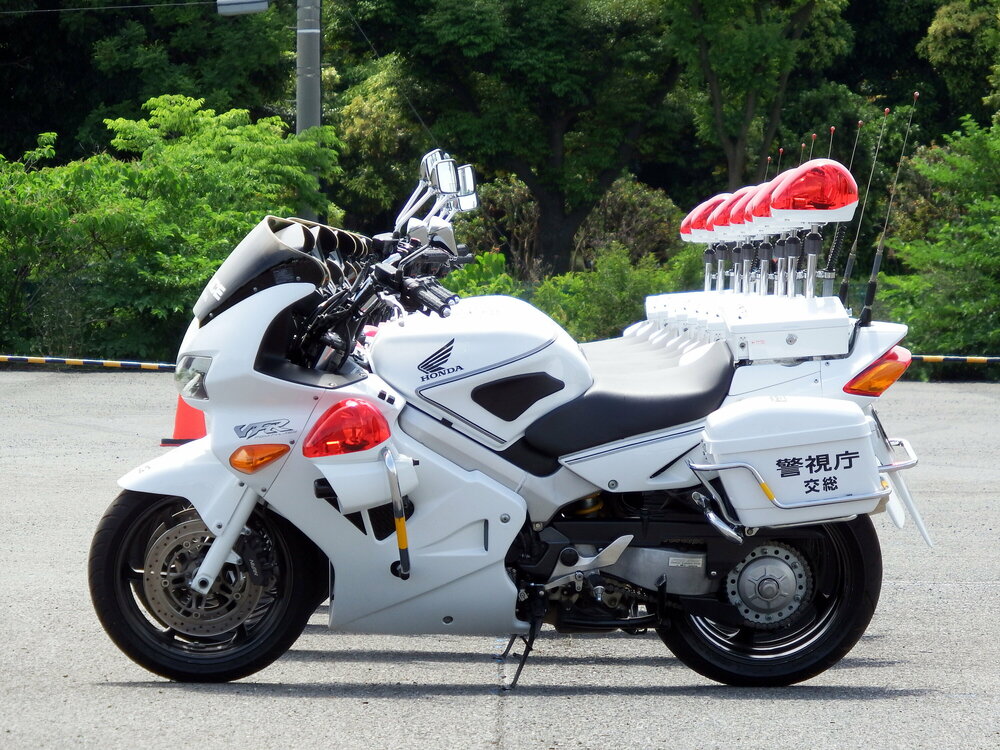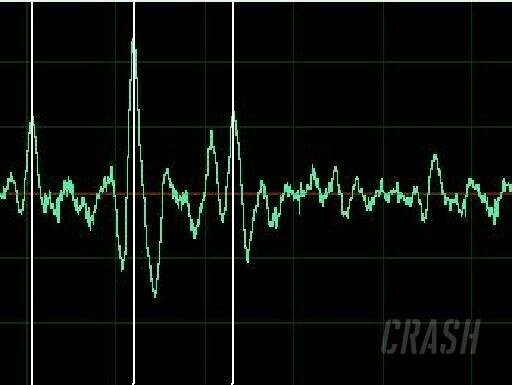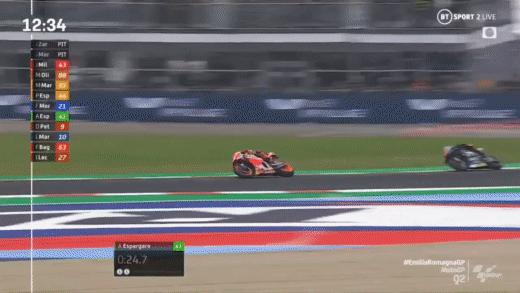-
Broj tema i poruka
1486 -
Pridružio se
-
Posetio poslednji put
Tip Sadržaja
Profili
Forumi
Galerija slika
Kalendar
Articles
Sve što je postavio član: Desmo
-
-
-
-
Jel ima neki link za gledanje hvala
-
-
Rc79 bas dobro izgleda, ali kazu da se nije dobro prodavao:
-
-
Mislim da je cak i 8. gen mehanicki ista kao 6. samo je izgled drugaciji
-
Da li ima neko na prodaju takav auspuh polovan? Ima ih na luisu 250e cini mi se
-
In 1991, significant changes were made to regulations that opened the path to new opportunities. The minimum weight of 500cc bikes was raised by 15 kilos to 130 kilos. This extra weight went into reinforcing the most fragile parts of the bike. The gearbox was improved and strengthened, thus eliminating one of the disadvantages of the new firing order. That's when Honda decided to put its new concept into practice by retaining its single crankshaft engine but employing the new firing order. And like that, the Big Bang was born. In 1992, the new Honda NSR 500 had an engine with a new crankshaft placement, with the four cylinders firing simultaneously at 70º. In this way, although the rear wheel takes on a heavy load with the four cylinders firing at once, there was 290º left to recover; whereas with the "traditional" firing order, firing two-by-two every 180º, the tire suffered less load but was systematically worn. The best advantage to this new engine, with its distinguishable "popping" sound that gave it the name "Big Bang", was that the tires performed better in racing distances. Wayne Gardner seemed to adapt well to the new concept, whereas Mick Doohan was faster with the former engine, but he realized that the undoubted advantages of the new engine in terms of tire performance made it superior. Initially, only three riders had the new engine: Gardner, Doohan, and the young amateur Alex Crivillé, although Garnder was injured in the inaugural test in Suzuka and again on his return in Mugello. So when he was finally in shape to race again, it was already the seventh race of the season in Hockenheim, and the weight of the team fell on Doohan. And he did not disappoint. He won outright the first four races of the season. The Honda Big Bang was superior, and it even turned out effective in novice Crivillé's hands, who in his third 500cc race in Shah Alam, finished on the podium, after Doohan and Rainey, with much more experienced riders finishing long after him. And in his eighth race, the day Doohan was injured, Crivillé won his first GP in 500cc. Honda had achieved an engine that improved driving and made handling the wild Honda NSR 500 easy, which already at the time was at around 170 CV of power. The '92 season was marked by Doohan's serious accident in Holland, which left him out for the rest of the season, although he ended up reappearing in the last two races in an attempt to gain some traction, but it wasn't enough to keep the title from going to Wayne Rainey. The other manufacturers quickly understood that they needed an engine like Honda's. By analyzing the harsh sound waves from the NSR's engine with an oscilloscope, they discovered the secret. Suzuki was the first to develop its Big Bang engine, which it presented at Hockenheim. Cagiva premiered it at the next race in Assen. And Yamaha a race later, in Hungaroring. The 1992 World Championship concluded with the four manufacturers applying the Big Bang concept to their engines. The Big Bang had a democratizing effect on the 500cc World Championship. Until its appearance, the World Championship categories were clearly classed: there were riders with large-displacement bikes and riders with small-displacement bikes. But with the Big Bang, you no longer needed to have experience in skid control. Any rider from the lower categories could easily adapt to the 500cc without suffering terrible falls due to a loss of traction, violent highsides, the whiplash suffered by 500cc riders. They would still be spectacular and powerful motorcycles, but now they were easier to ride. 1997 Honda NSR500
-
UNSEEN: Ducati and Bagnaia's Turn 15 Misano heartbreak: https://youtu.be/ts9WmEYs_Po
-
Ma nema problem sa digitalizacijom nego sa sadrzajem
-
-
-
Nije ni jeftin ACF-50 - 10032 - Anti-Corrosion Lubricant Compound - 1 USQT W/Spray PILOTSHOP.RS Download:SDS - Safety Data SheetTDS - Technical Data SheetACF-50, Anti-Corrosion Formula, is a state of the art, anti-corrosion/lubricant compound, that has been specifically designed for the Aero Space...
-
Big Bang Theory - Virgin Yamaha R1 WWW.VISORDOWN.COM Big bang motors have arrived in BSB. Virgin Yamaha's R1 breaks the mould, not the rules
-
A kad skines heblove shvatis da ipak nije bilo do toga
-
-
Sa jamahinog sajta: Mounting a crossplane crankshaft, 4-valve engine The development aims for the 2004 M1 were to achieve more linear throttle response while achieving both improved handling performance and stability with a chassis layout better suited to the in-line-4 engine. Engine development focused on the by the crossplane crankshaft function (uneven firing interval) and further maturation of the idling control system ICS (idling control system) to achieve a natural engine brake effect. The combustion chamber was a new 4-valve type that was chosen for its potential to maximize the performance of the FI system. There was also further development of the EMS. While the previous year's model had performed on the basis of calculations from a pre-programmed control map, the OWP3 added to the mapped control a feedback type control system that reflected information on actual running conditions at any given time. The geometry of the frame was optimized with priority on stability. The rear arm was lengthened and the position of the engine was effectively moved forward. To help ensure stable suspension performance regardless of the changes in G forces coming to bear on the machine in the lateral direction during cornering, the relative rigidity in the lateral direction was reduced. This is the machine that V. Rossi rode to win his first MotoGP title with Yamaha.
-
...a ovo je definicija big bang-a: “Uneven- or irregular-interval firing has been employed in racing engines—the so-called ‘Big Bang,’ with more than one cylinder firing simultaneously,” Furusawa Masao explained. Kao kod NSR 500 ili V5 RCV koja je nekoliko sezona koristila big bang pa u zavisnosti od promena pravilia zapremeni, guma, menjala konfiguraciju. Ima dosta dezinformacija na webu (uglavnom slucajnih i iz neznanja) a ima i namernih, jer su ipak u pitanju takmicenja te zbog toga ima i dosta pogresnih tumacenja. Navodno je 2005-2006 Yamaha Virgin britanskog superbike sampionata u par navrata testirala nekoliko kofiguracija "Big Bang": 1. "The 'Big-Bang' Superbike engine is nothing new but, although extensively tested, it has never previously been raced due to the problems caused by the two big power pulses produced. These two 'Big-Bang' pulses, within a four-cylinder engine, create a tremendous amount of stress, often leading to failure within 30 minutes." 2. Instead of firing the cylinders in two groups of two, Crash.net believes the Virgin Yamaha team fire one cylinder on its own first, then two cylinders together, and then the fourth and final cylinder on its own. This effectively reduces the amount of stress on the engine by half. Analysis of audio recordings of the Virgin Yamaha 'Big-Bang' engine showed three distinctive 'bangs': One bang, followed by a second - even bigger - bang, and then another smaller bang. The audio waves the engine pulses produce can be seen in the lower picture: "My engineering head tells me that this makes perfect sense," commented Smart on the evidence presented to him. "The firing of the single cylinder before the two together sets up the stressed members so when it (the two cylinders together) does come, it is not such a big shock." BSB Suzuki: There is also a massive increase in stress on the camshafts, as Rizla Suzuki's Scott Smart - well versed in the technical aspects of race engineering - describes: "When we tried it ('Big-Bang') with a GSX-R600 K1 years ago, the force on the cams of opening two sets of inlet valves at the same time, with no help from the closing of another set, was simply too much strain on the cam chain," he said. The failure in the cam chain arises when the cam-shaft tries to open two-cylinders worth of inlet valves simultaneously, the force from the valve springs being simply too great to overcome for long periods. Sto se tice civilne verzije R1 posle 2009 (i uglavnom na svim verzijama takmicarske M1), redosled paljenja cilindara je nepravilan 270-180-90-180:
-
-
-





